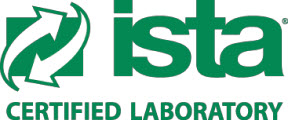Environmental Conditioning
Environmental conditioning testing validates the resilience of medical device packaging under real-world conditions such as temperature fluctuations, humidity, and pressure changes. By predicting longevity, verifying sterility, and reducing risks, this testing ensures your packaging meets ISO 11607 standards and FDA regulations. Trust Life Science Outsourcing to deliver precise testing, protect product integrity, and help you bring safe, reliable devices to market with confidence.
What is medical device package environmental conditioning testing?
Environmental conditioning testing involves exposing medical device packaging to various environmental conditions. These can include temperature, humidity, and pressure, which represent real-world conditions that the device in its packaging may be exposed to during transportation, storage, and handling.
Such testing is needed to:
Ensure device integrity
Environmental conditioning helps to verify that the packaging will protect the device from environmental stressors that could compromise sterility or functionality.
Predict longevity
Manufacturers can predict how long their packaging will last and how it will perform over time.
Reduce risk
Environmental conditioning can identify potential package failure before products reach the market and reduce product recall risk.
What is medical device package environmental conditioning testing?
Medical device manufacturers use environmental conditioning testing to ensure packaging meets required standards and that their device will be protected throughout its intended life cycle. Packaging engineers, quality assurance teams, and regulatory compliance specialists also rely on this testing method to verify that the packaging will meet regulatory and safety standards.
How does environmental conditioning package testing work?
Testing parameter definitions
Environmental conditions such as temperature fluctuations, humidity levels, pressure changes, and potential exposure to chemicals or radiation are determined. Test criteria is established, and may include maintaining structural integrity, ensuring sterility, or preserving functionality.
Sample preparation
Representative product or packaging samples are selected. This is generally done according to the batch or production lot to provide consistency in testing. Preconditioning occurs, such as storing the samples at room temperature or initial humidity level exposure.
Environmental tests
Environmental testing may include: Temperature cycling, humidity testing, pressure testing, chemical exposure, and radiation testing.
Performance evaluation
Samples are inspected for any change or damage to verify that products still perform correctly and confirm that packaging will maintain sterility.
Analyze results
If the product or packaging fails the tests, design adjustments are made. Retesting occurs to determine if changes have solved the identified issues.
Compliance reporting
Reports are prepared with testing procedures, results, and compliance details. Documentation is submitted.

